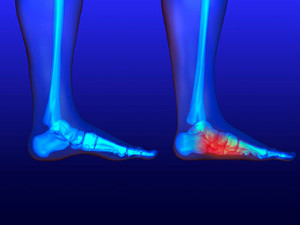Blogs
Possible Causes of Flat Feet
The medical term that is referred to as flat feet is indicative of little or no arches in the feet. It is noticeable while standing, as the foot rests completely on the floor. Many patients who experience this condition often feel foot pain, and this can result from ligaments and muscles that have become strained. Additionally, the feet may feel stiff, and shoes may wear unevenly and quickly. There are several causes as to why flat feet can exist. These include injuries that may have occurred to the foot or ankle, inherited traits, or muscle diseases such as muscular dystrophy or cerebral palsy. Mild relief may be found when gentle foot stretches and exercises are performed, as this may help to manage the symptoms. If you have flat feet, it is strongly advised that you counsel with a podiatrist who can offer treatment techniques that are correct for you.
Flatfoot is a condition many people suffer from. If you have flat feet, contact Dr. Dean D. Hinners from Illinois. Our doctor will treat your foot and ankle needs.
What Are Flat Feet?
Flatfoot is a condition in which the arch of the foot is depressed and the sole of the foot is almost completely in contact with the ground. About 20-30% of the population generally has flat feet because their arches never formed during growth.
Conditions & Problems:
Having flat feet makes it difficult to run or walk because of the stress placed on the ankles.
Alignment – The general alignment of your legs can be disrupted, because the ankles move inward which can cause major discomfort.
Knees – If you have complications with your knees, flat feet can be a contributor to arthritis in that area.
Symptoms
- Pain around the heel or arch area
- Trouble standing on the tip toe
- Swelling around the inside of the ankle
- Flat look to one or both feet
- Having your shoes feel uneven when worn
Treatment
If you are experiencing pain and stress on the foot you may weaken the posterior tibial tendon, which runs around the inside of the ankle.
If you have any questions please feel free to contact one of our offices located in Metropolis and Eldorado, IL . We offer the newest diagnostic and treatment technologies for all your foot and ankle needs.
Read more about What is Flexible Flat Foot?What Causes Ankle Pain?
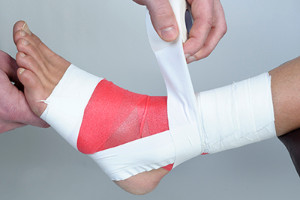 There are different forms of ankle pain, and they can occur for a variety of different reasons. For example, an ankle sprain is a common injury that can happen as a result of falling and twisting the ankle. The ligaments can tear or stretch, and this generally causes severe pain and discomfort. If the joints surrounding the ankle become inflamed, a condition known as arthritis may be present. The most common forms of this condition are rheumatoid arthritis and osteoarthritis. Additionally, gout is a painful condition that affects the big toe primarily, but can affect the ankle as well. It can occur as a result of specific foods that are eaten. Some patients develop tendonitis in the ankle, which can cause difficulty in moving the lower portion of the foot. If you are experiencing ankle pain for any reason, it is advised to speak to a podiatrist who can guide you toward beginning the correct treatment.
There are different forms of ankle pain, and they can occur for a variety of different reasons. For example, an ankle sprain is a common injury that can happen as a result of falling and twisting the ankle. The ligaments can tear or stretch, and this generally causes severe pain and discomfort. If the joints surrounding the ankle become inflamed, a condition known as arthritis may be present. The most common forms of this condition are rheumatoid arthritis and osteoarthritis. Additionally, gout is a painful condition that affects the big toe primarily, but can affect the ankle as well. It can occur as a result of specific foods that are eaten. Some patients develop tendonitis in the ankle, which can cause difficulty in moving the lower portion of the foot. If you are experiencing ankle pain for any reason, it is advised to speak to a podiatrist who can guide you toward beginning the correct treatment.
Ankle pain can have many different causes and the pain may potentially be serious. If you have ankle pain, consult with Dr. Dean D. Hinners from Illinois. Our doctor will assess your condition and provide you with quality foot and ankle treatment.
Ankle pain is any condition that causes pain in the ankle. Due to the fact that the ankle consists of tendons, muscles, bones, and ligaments, ankle pain can come from a number of different conditions.
Causes
The most common causes of ankle pain include:
- Types of arthritis (rheumatoid, osteoarthritis, and gout)
- Ankle sprains
- Broken ankles
- Achilles tendinitis
- Achilles tendon rupture
- Stress fractures
- Tarsal tunnel syndrome
- Plantar fasciitis
Symptoms
Symptoms of ankle injury vary based upon the condition. Pain may include general pain and discomfort, swelling, aching, redness, bruising, burning or stabbing sensations, and/or loss of sensation.
Diagnosis
Due to the wide variety of potential causes of ankle pain, podiatrists will utilize a number of different methods to properly diagnose ankle pain. This can include asking for personal and family medical histories and of any recent injuries. Further diagnosis may include sensation tests, a physical examination, and potentially x-rays or other imaging tests.
Treatment
Just as the range of causes varies widely, so do treatments. Some more common treatments are rest, ice packs, keeping pressure off the foot, orthotics and braces, medication for inflammation and pain, and surgery.
If you have any questions, please feel free to contact one of our offices located in Metropolis and Eldorado, IL . We offer the newest diagnostic and treatment technologies for all your foot care needs.
Read more about Ankle Pain
Wounds That Don't Heal Need to Be Checked
What is a Stress Fracture?
A stress fracture is considered to be an overuse injury of the bone. For people that are putting a lot of stress on their feet from standing on a daily basis, this can cause small cracks to form on the bone due to the amount of pressure being put on them. This will usually cause a stress fracture. They can occur in the feet on the metatarsal bones, the navicular bone and the calcaneus which is also known as the heel bone. Some causes are muscle weakness or fatigue, weak bones and improper muscle or bone alignment. Symptoms of a stress fracture include pain during exercise, pain while trying to sleep and swelling or tenderness at the site of injury. If you are dealing with persistent foot pain and it has the signs of a stress fracture, it is advised that you visit a podiatrist as soon as you can.
an overuse injury of the bone. For people that are putting a lot of stress on their feet from standing on a daily basis, this can cause small cracks to form on the bone due to the amount of pressure being put on them. This will usually cause a stress fracture. They can occur in the feet on the metatarsal bones, the navicular bone and the calcaneus which is also known as the heel bone. Some causes are muscle weakness or fatigue, weak bones and improper muscle or bone alignment. Symptoms of a stress fracture include pain during exercise, pain while trying to sleep and swelling or tenderness at the site of injury. If you are dealing with persistent foot pain and it has the signs of a stress fracture, it is advised that you visit a podiatrist as soon as you can.
Stress fractures occur when there is a tiny crack within a bone. To learn more, contact Dr. Dean D. Hinners from Illinois. Our doctor can provide the care you need to keep you pain free and on your feet.
How Are They Caused?
Stress fractures are the result of repetitive force being placed on the bone. Since the lower leg and feet often carry most of the body’s weight, stress fractures are likely to occur in these areas. If you rush into a new exercise, you are more likely to develop a stress fracture since you are starting too much, too soon. Pain resulting from stress fractures may go unnoticed at first, however it may start to worsen over time.
Risk Factors
- Gender – They are more commonly found in women compared to men.
- Foot Problems – People with unusual arches in their feet are more likely to develop stress fractures.
- Certain Sports – Dancers, gymnasts, tennis players, runners, and basketball players are more likely to develop stress fractures.
- Lack of Nutrients – A lack of vitamin D and calcium may weaken the bones and make you more prone to stress fractures
- Weak Bones – Osteoporosis can weaken the bones therefore resulting in stress fractures
Stress fractures do not always heal properly, so it is important that you seek help from a podiatrist if you suspect you may have one. Ignoring your stress fracture may cause it to worsen, and you may develop chronic pain as well as additional fractures.
If you have any questions, please feel free to contact one of our offices located in Metropolis and Eldorado, IL . We offer the newest diagnostic and treatment technologies for all your foot care needs.
Read more about Stress Fractures of the Foot and AnkleUnderstanding Athlete's Foot
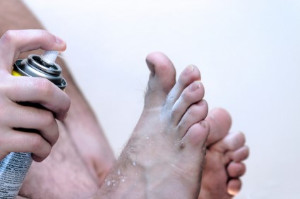 Athlete’s foot is a common fungal infection. A majority of athlete’s foot cases are caused by fungi that thrive in closed, warm, and moist environments. The fungi feed on Keratin, which is a protein found in the hair, nails, and skin. Athlete’s foot is mildly contagious and can spread through direct contact with the infection and by skin particles left on towels, shoes, or floors. Walking barefoot can increase the chances of contracting athlete’s foot. The risk can also go up depending on your susceptibility. People who have impaired immune systems or diabetes are at greater risk for infection if they have an open cut or sore on their foot. If you have developed athlete’s foot or feel that you may be at risk, it is advised that you consult with a podiatrist.
Athlete’s foot is a common fungal infection. A majority of athlete’s foot cases are caused by fungi that thrive in closed, warm, and moist environments. The fungi feed on Keratin, which is a protein found in the hair, nails, and skin. Athlete’s foot is mildly contagious and can spread through direct contact with the infection and by skin particles left on towels, shoes, or floors. Walking barefoot can increase the chances of contracting athlete’s foot. The risk can also go up depending on your susceptibility. People who have impaired immune systems or diabetes are at greater risk for infection if they have an open cut or sore on their foot. If you have developed athlete’s foot or feel that you may be at risk, it is advised that you consult with a podiatrist.
Athlete’s Foot
Athlete’s foot is often an uncomfortable condition to experience. Thankfully, podiatrists specialize in treating athlete’s foot and offer the best treatment options. If you have any questions about athlete’s foot, consult with Dr. Dean D. Hinners from Illinois. Our doctor will assess your condition and provide you with quality treatment.
What Is Athlete’s Foot?
Tinea pedis, more commonly known as athlete’s foot, is a non-serious and common fungal infection of the foot. Athlete’s foot is contagious and can be contracted by touching someone who has it or infected surfaces. The most common places contaminated by it are public showers, locker rooms, and swimming pools. Once contracted, it grows on feet that are left inside moist, dark, and warm shoes and socks.
Prevention
The most effective ways to prevent athlete’s foot include:
- Thoroughly washing and drying feet
- Avoid going barefoot in locker rooms and public showers
- Using shower shoes in public showers
- Wearing socks that allow the feet to breathe
- Changing socks and shoes frequently if you sweat a lot
Symptoms
Athlete’s foot initially occurs as a rash between the toes. However, if left undiagnosed, it can spread to the sides and bottom of the feet, toenails, and if touched by hand, the hands themselves. Symptoms include:
- Redness
- Burning
- Itching
- Scaly and peeling skin
Diagnosis and Treatment
Diagnosis is quick and easy. Skin samples will be taken and either viewed under a microscope or sent to a lab for testing. Sometimes, a podiatrist can diagnose it based on simply looking at it. Once confirmed, treatment options include oral and topical antifungal medications.
If you have any questions, please feel free to contact one of our offices located in Metropolis and Eldorado, IL . We offer the newest diagnostic and treatment technologies for all your foot care needs.
Read more about Athlete’s Foot
Heel Spur Facts
A heel spur is a bony protruding outgr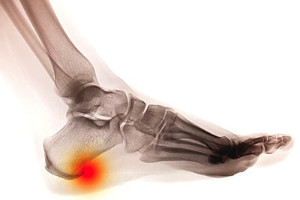 owth on the bone of the heel. They can be located either at the back of the heel or under it. Heel spurs located at the back of the heel are most often associated with inflammation of the Achilles tendon, which can cause tenderness and heel pain. Heel spurs will be diagnosed based on if you have a history of heel pain and if there is tenderness at the bottom of the heel. An X-Ray is typically required to confirm this. Some treatments for heel spurs include applying ice to the spot of the spur, orthotic devices or shoe inserts, anti-inflammatory medications such as Aleve and Advil, cortisone injections and sometimes surgery. Generally, heel spurs don’t lead to any long term conditions, as they usually respond well to the treatments mentioned previously. If you feel you may have developed a heel spur, it is advised that you go see a podiatrist.
owth on the bone of the heel. They can be located either at the back of the heel or under it. Heel spurs located at the back of the heel are most often associated with inflammation of the Achilles tendon, which can cause tenderness and heel pain. Heel spurs will be diagnosed based on if you have a history of heel pain and if there is tenderness at the bottom of the heel. An X-Ray is typically required to confirm this. Some treatments for heel spurs include applying ice to the spot of the spur, orthotic devices or shoe inserts, anti-inflammatory medications such as Aleve and Advil, cortisone injections and sometimes surgery. Generally, heel spurs don’t lead to any long term conditions, as they usually respond well to the treatments mentioned previously. If you feel you may have developed a heel spur, it is advised that you go see a podiatrist.
Heel spurs can be incredibly painful and sometimes may make you unable to participate in physical activities. To get medical care for your heel spurs, contact Dr. Dean D. Hinners from Illinois. Our doctor will do everything possible to treat your condition.
Heels Spurs
Heel spurs are formed by calcium deposits on the back of the foot where the heel is. This can also be caused by small fragments of bone breaking off one section of the foot, attaching onto the back of the foot. Heel spurs can also be bone growth on the back of the foot and may grow in the direction of the arch of the foot.
Older individuals usually suffer from heel spurs and pain sometimes intensifies with age. One of the main condition's spurs are related to is plantar fasciitis.
Pain
The pain associated with spurs is often because of weight placed on the feet. When someone is walking, their entire weight is concentrated on the feet. Bone spurs then have the tendency to affect other bones and tissues around the foot. As the pain continues, the feet will become tender and sensitive over time.
Treatments
There are many ways to treat heel spurs. If one is suffering from heel spurs in conjunction with pain, there are several methods for healing. Medication, surgery, and herbal care are some options.
If you have any questions feel free to contact one of our offices located in Metropolis and Eldorado, IL . We offer the latest in diagnostic and treatment technology to meet your needs.
Read more about How to Treat Heel SpursSymptoms of an Achilles Tendon Injury
 The Achilles tendon is located at the back of the calf, and its function is to connect the heel to the calf muscles. It is important for this tendon to remain strong, as it is necessary in performing running and jumping activities. Achilles tendonitis occurs if it becomes irritated, inflamed, or swollen. This can happen for a variety of reasons, including increasing the intensity of a new sport, wearing inappropriate shoes while exercising, or from having tight calf muscles. Some of the symptoms that are associated with this condition can include pain and discomfort near the heel, and some patients may have difficulty in flexing and pointing the injured foot. Effective treatment options can include resting the foot, performing exercises to strengthen the calf muscles, in addition to possibly wearing orthotics. If you feel you have injured your Achilles tendon, it is strongly advised to consult with a podiatrist who can guide you toward proper treatment options.
The Achilles tendon is located at the back of the calf, and its function is to connect the heel to the calf muscles. It is important for this tendon to remain strong, as it is necessary in performing running and jumping activities. Achilles tendonitis occurs if it becomes irritated, inflamed, or swollen. This can happen for a variety of reasons, including increasing the intensity of a new sport, wearing inappropriate shoes while exercising, or from having tight calf muscles. Some of the symptoms that are associated with this condition can include pain and discomfort near the heel, and some patients may have difficulty in flexing and pointing the injured foot. Effective treatment options can include resting the foot, performing exercises to strengthen the calf muscles, in addition to possibly wearing orthotics. If you feel you have injured your Achilles tendon, it is strongly advised to consult with a podiatrist who can guide you toward proper treatment options.
Achilles tendon injuries need immediate attention to avoid future complications. If you have any concerns, contact Dr. Dean D. Hinners of Illinois. Our doctor can provide the care you need to keep you pain-free and on your feet.
What Is the Achilles Tendon?
The Achilles tendon is a tendon that connects the lower leg muscles and calf to the heel of the foot. It is the strongest tendon in the human body and is essential for making movement possible. Because this tendon is such an integral part of the body, any injuries to it can create immense difficulties and should immediately be presented to a doctor.
What Are the Symptoms of an Achilles Tendon Injury?
There are various types of injuries that can affect the Achilles tendon. The two most common injuries are Achilles tendinitis and ruptures of the tendon.
Achilles Tendinitis Symptoms
- Inflammation
- Dull to severe pain
- Increased blood flow to the tendon
- Thickening of the tendon
Rupture Symptoms
- Extreme pain and swelling in the foot
- Total immobility
Treatment and Prevention
Achilles tendon injuries are diagnosed by a thorough physical evaluation, which can include an MRI. Treatment involves rest, physical therapy, and in some cases, surgery. However, various preventative measures can be taken to avoid these injuries, such as:
- Thorough stretching of the tendon before and after exercise
- Strengthening exercises like calf raises, squats, leg curls, leg extensions, leg raises, lunges, and leg presses
If you have any questions please feel free to contact one of our offices located in Metropolis and Eldorado, IL . We offer the newest diagnostic tools and technology to treat your foot and ankle needs.
Read more about Achilles Tendon InjuriesThe Benefits of Walking Barefoot for Babies
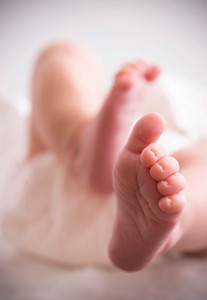 Research has indicated that most babies are born with flat feet. This is typically the result of muscles, tendons, and ligaments that have not fully developed yet. When the child starts to walk, it is encouraged to walk barefoot while indoors. The toes will grasp the floor naturally, and this is beneficial in strengthening the entire foot. When walking begins, the foot should be properly measured so the correct size shoe can be determined. It is important for the soles to be flexible, in addition to confirming there is adequate room for the toes to move freely in. Some children will walk with their toes pointing inward or outward. If this pertains to your child, it is suggested to consult with a podiatrist who can properly examine your child’s feet.
Research has indicated that most babies are born with flat feet. This is typically the result of muscles, tendons, and ligaments that have not fully developed yet. When the child starts to walk, it is encouraged to walk barefoot while indoors. The toes will grasp the floor naturally, and this is beneficial in strengthening the entire foot. When walking begins, the foot should be properly measured so the correct size shoe can be determined. It is important for the soles to be flexible, in addition to confirming there is adequate room for the toes to move freely in. Some children will walk with their toes pointing inward or outward. If this pertains to your child, it is suggested to consult with a podiatrist who can properly examine your child’s feet.
Making sure that your children maintain good foot health is very important as they grow. If you have any questions, contact Dr. Dean D. Hinners of Illinois. Our doctor can provide the care you need to keep you pain-free and on your feet.
Keeping Children's Feet Healthy
Having healthy feet during childhood can help prevent medical problems later in life, namely in the back and legs. As children grow, their feet require different types of care. Here are some things to consider...
Although babies do not walk yet, it is still very important to take care of their feet.
Avoid putting tight shoes or socks on his or her feet.
Allow the baby to stretch and kick his or her feet to feel comfortable.
As a toddler, kids are now on the move and begin to develop differently. At this age, toddlers are getting a feel for walking, so don’t be alarmed if your toddler is unsteady or ‘walks funny’.
As your child gets older, it is important to teach them how to take care of their feet.
Show them proper hygiene to prevent infections such as fungus.
Be watchful for any pain or injury.
Have all injuries checked by a doctor as soon as possible.
Comfortable, protective shoes should always be worn, especially at play.
If you have any questions please feel free to contact one of our offices located in Metropolis and Eldorado, IL . We offer the newest diagnostic and treatment technologies for all your foot and ankle needs.
Read more about What to Do to Keep Your Child’s Feet HealthyIt's Time for Beautiful Feet
The Impact of Obesity on Your Feet
 While obesity is known to affect the entire body, it especially affects the feet. The primary problem that obesity presents to feet is the amount of extra weight applied to them. This extra weight results in both immediate stress on the skin and bones, as well as them being physically altered over time. Another problem that can manifest due to obesity is fallen arches on the feet. This is a common side effect and can lead to long-term pain. If these problems are left untreated, it can turn into other foot ailments over time as well as widespread chronic pain in the knees, back, and hips. Some solutions include wearing comfortable shoes that provide arch support, and most importantly, general weight loss. If you feel that obesity is affecting your feet in any way, it is important to see a podiatrist as soon as possible to avoid potential problems.
While obesity is known to affect the entire body, it especially affects the feet. The primary problem that obesity presents to feet is the amount of extra weight applied to them. This extra weight results in both immediate stress on the skin and bones, as well as them being physically altered over time. Another problem that can manifest due to obesity is fallen arches on the feet. This is a common side effect and can lead to long-term pain. If these problems are left untreated, it can turn into other foot ailments over time as well as widespread chronic pain in the knees, back, and hips. Some solutions include wearing comfortable shoes that provide arch support, and most importantly, general weight loss. If you feel that obesity is affecting your feet in any way, it is important to see a podiatrist as soon as possible to avoid potential problems.
Obesity has become very problematic at this point in time and can have extremely negative effects on the feet. If you’re an obese individual and are concerned about your feet, contact Dr. Dean D. Hinners from Illinois. Our doctor can provide the care you need to keep you pain-free and on your feet.
Obesity and Your Feet
Since your feet are what support your entire weight when standing, any additional weight can result in pain and swelling. Being overweight is one of the main contributors to foot complications.
Problems & Complications
Extra Weight – Even putting on just a few extra pounds could create serious complications for your feet. As your weight increases, your balance and body will shift, creating new stresses on your feet. This uneven weight distribution can cause pain, even while doing the simplest tasks, such as walking.
Diabetes – People who are overweight are at serious risk of developing type-2 diabetes, which has a drastic impact on the health of your feet. As you get older, your diabetes might worsen, which could lead to loss of feeling in your feet, sores, and bruises. You could also become more prone to various infections.
Plantar fasciitis – Pressure and stress that is placed on muscles, joints, and tendons can trigger plantar fasciitis, which is an inflammation of tissue that forms along the bottom of the foot.
If you have any questions please feel free to contact one of our offices located in Metropolis and Eldorado, IL . We offer the newest diagnostic and treatment technologies for all your foot and ankle needs.
Read more about Obesity and the FeetMore...
Have I Broken My Toe?
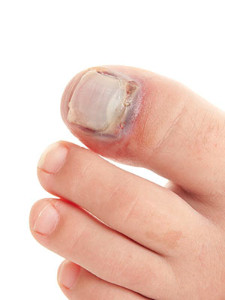 Many patients will experience a broken toe after a heavy object has fallen on it, or if it bangs into a piece of furniture. Consistent movements over an extended period of time can also weaken the bones in the toe, and this may result in a hairline fracture. Some of the symptoms that are associated with a broken toe often include pain, swelling, and bruising. Toes that are severely broken often bleed, and can point in the wrong direction. Many patients find comfort when the toe is elevated, as this may help to control any existing swelling. Additionally, the healing process can begin when the affected toe is taped to the toe next to it, which is referred to as buddy taping. If you feel you have broken your toe, it is suggested that you consult with a podiatrist who can perform an X-ray which confirms this condition, followed by beginning the correct treatment for you.
Many patients will experience a broken toe after a heavy object has fallen on it, or if it bangs into a piece of furniture. Consistent movements over an extended period of time can also weaken the bones in the toe, and this may result in a hairline fracture. Some of the symptoms that are associated with a broken toe often include pain, swelling, and bruising. Toes that are severely broken often bleed, and can point in the wrong direction. Many patients find comfort when the toe is elevated, as this may help to control any existing swelling. Additionally, the healing process can begin when the affected toe is taped to the toe next to it, which is referred to as buddy taping. If you feel you have broken your toe, it is suggested that you consult with a podiatrist who can perform an X-ray which confirms this condition, followed by beginning the correct treatment for you.
A broken toe can be very painful and lead to complications if not properly fixed. If you have any concerns about your feet, contact Dr. Dean D. Hinners from Illinois. Our doctor will treat your foot and ankle needs.
What to Know About a Broken Toe
Although most people try to avoid foot trauma such as banging, stubbing, or dropping heavy objects on their feet, the unfortunate fact is that it is a common occurrence. Given the fact that toes are positioned in front of the feet, they typically sustain the brunt of such trauma. When trauma occurs to a toe, the result can be a painful break (fracture).
Symptoms of a Broken Toe
- Throbbing pain
- Swelling
- Bruising on the skin and toenail
- The inability to move the toe
- Toe appears crooked or disfigured
- Tingling or numbness in the toe
Generally, it is best to stay off of the injured toe with the affected foot elevated.
Severe toe fractures may be treated with a splint, cast, and in some cases, minor surgery. Due to its position and the pressure it endures with daily activity, future complications can occur if the big toe is not properly treated.
If you have any questions please feel free to contact one of our offices located in Metropolis and Eldorado, IL . We offer the newest diagnostic and treatment technologies for all your foot and ankle needs.
Read more about What to Know About a Broken ToePregnancy and Foot Massages
 Many pregnant women enjoy the benefits of receiving frequent foot massages. Research has indicated this type of therapy may be beneficial in positively affecting the uterus, and can be helpful in reducing swollen feet. Additionally, foot massages may reduce anxiety and stress, and can help the mother-to-be remain calm and relaxed. It is said this type of therapy can stimulate endorphins, which can aid in maintaining a positive attitude. If you are expecting a child, and would like additional information about the benefits of foot massages, it is suggested that you consult with a podiatrist.
Many pregnant women enjoy the benefits of receiving frequent foot massages. Research has indicated this type of therapy may be beneficial in positively affecting the uterus, and can be helpful in reducing swollen feet. Additionally, foot massages may reduce anxiety and stress, and can help the mother-to-be remain calm and relaxed. It is said this type of therapy can stimulate endorphins, which can aid in maintaining a positive attitude. If you are expecting a child, and would like additional information about the benefits of foot massages, it is suggested that you consult with a podiatrist.
Pregnant women with swollen feet can be treated with a variety of different methods that are readily available. For more information about other cures for swollen feet during pregnancy, consult with Dr. Dean D. Hinners from Illinois. Our doctor will attend to all of your foot and ankle needs.
What Foot Problems Can Arise During Pregnancy?
One problem that can occur is overpronation, which occurs when the arch of the foot flattens and tends to roll inward. This can cause pain and discomfort in your heels while you’re walking or even just standing up, trying to support your baby.
Another problem is edema, or swelling in the extremities. This often affects the feet during pregnancy but tends to occur in the later stages.
How Can I Keep My Feet Healthy During Pregnancy?
- Wearing orthotics can provide extra support for the feet and help distribute weight evenly
- Minimize the amount of time spent walking barefoot
- Wear shoes with good arch support
- Wear shoes that allow for good circulation to the feet
- Elevate feet if you experience swelling
- Massage your feet
- Get regular, light exercise, such as walking, to promote blood circulation to the feet
If you have any questions please feel free to contact one of our offices located in Metropolis and Eldorado, IL . We offer the newest diagnostic and treatment technologies for all your foot and ankle needs.
Read more about Foot Care for Pregnant WomenUnderstanding Your Child’s Heel Pain
 Your child may experience heel pain during a growth spurt. This condition is commonly known as Sever’s disease. Since the heel grows faster than the rest of the leg, the tendons experience extra strain. Symptoms of Sever’s disease include pain in one or both of the heels, tenderness that increases during exercise, and trouble walking. Oftentimes, the best treatment is rest. The condition does not cause long-term issues and should subside after a few months. However, sometimes doctors will recommend that a child takes NSAIDs such as ibuprofen, performs stretching routines, and wears supportive shoes. Be especially cognizant for Sever’s disease if your child plays a sport that includes running or jumping on hard surfaces. If your child is experiencing heel pain, be sure to contact a podiatrist.
Your child may experience heel pain during a growth spurt. This condition is commonly known as Sever’s disease. Since the heel grows faster than the rest of the leg, the tendons experience extra strain. Symptoms of Sever’s disease include pain in one or both of the heels, tenderness that increases during exercise, and trouble walking. Oftentimes, the best treatment is rest. The condition does not cause long-term issues and should subside after a few months. However, sometimes doctors will recommend that a child takes NSAIDs such as ibuprofen, performs stretching routines, and wears supportive shoes. Be especially cognizant for Sever’s disease if your child plays a sport that includes running or jumping on hard surfaces. If your child is experiencing heel pain, be sure to contact a podiatrist.
Sever's disease often occurs in children and teens. If your child is experiencing foot or ankle pain, see Dr. Dean D. Hinners from Illinois. Our doctor can treat your child’s foot and ankle needs.
Sever’s Disease
Sever’s disease is also known as calcaneal apophysitis, which is a medical condition that causes heel pain I none or both feet. The disease is known to affect children between the ages of 8 and 14.
Sever’s disease occurs when part of the child’s heel known as the growth plate (calcaneal epiphysis) is attached to the Achilles tendon. This area can suffer injury when the muscles and tendons of the growing foot do not keep pace with bone growth. Therefore, the constant pain which one experiences at the back of the heel will make the child unable to put any weight on the heel. The child is then forced to walk on their toes.
Symptoms
Acute pain – Pain associated with Sever’s disease is usually felt in the heel when the child engages in physical activity such as walking, jumping and or running.
Highly active – Children who are very active are among the most susceptible in experiencing Sever’s disease, because of the stress and tension placed on their feet.
If you have any questions, please feel free to contact one of our offices located in Metropolis and Eldorado, IL . We offer the newest diagnostic and treatment technologies for all your foot and ankle injuries.
Read more about Sever's Disease